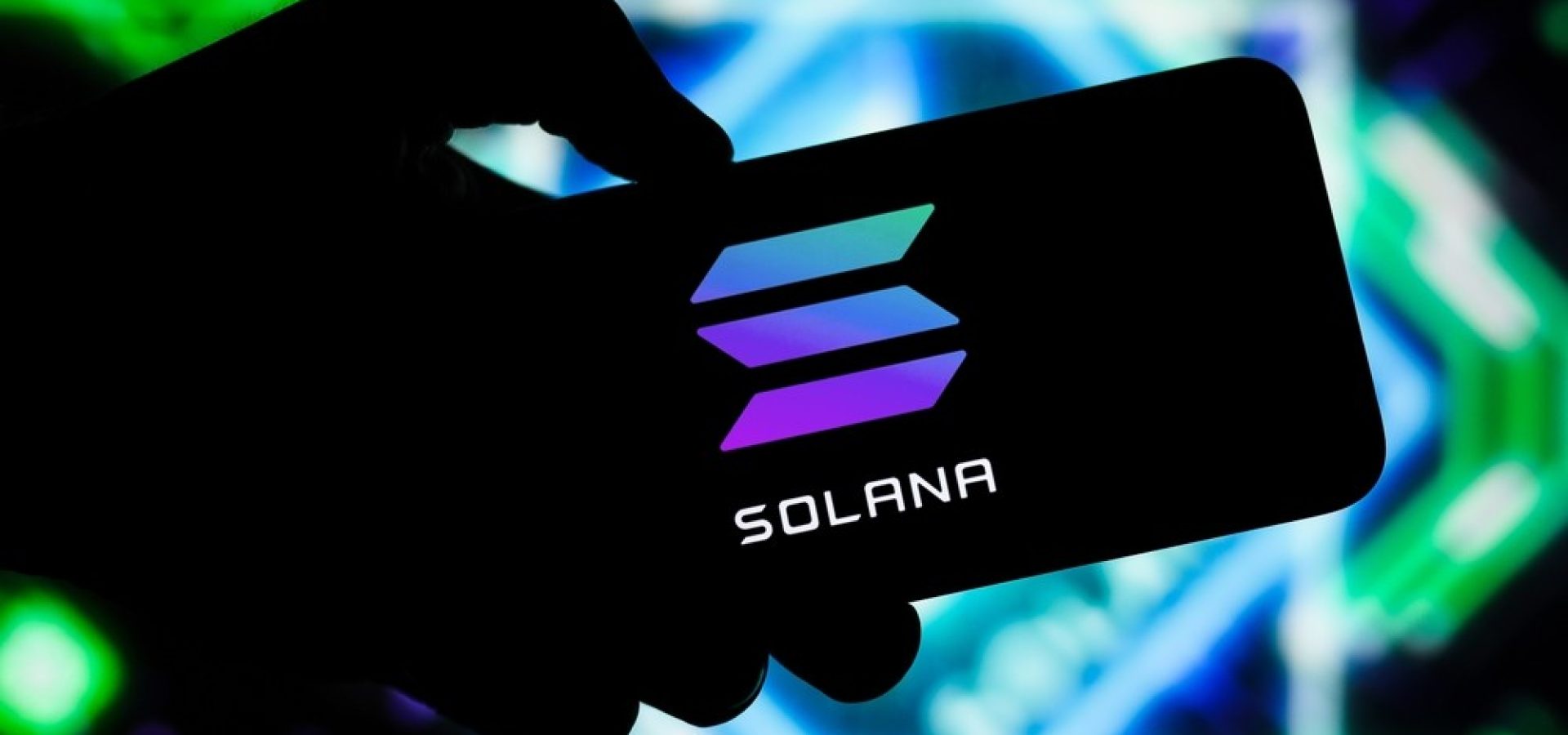People from all over the world have questions about the future of Solana. So, is Solana dead? To cut a long story short, no, it isn’t. The situation is more complicated than it may appear at first glance.
As 2023 drew to a close, Solana experienced a remarkable turnaround, registering an impressive surge of nearly 1,000% by year’s end. This dramatic upswing propelled Solana to the status of the fourth-largest cryptocurrency globally. This late resurgence raises critical questions about its driving forces: Was it merely a speculative bubble, or did it rest on solid fundamental growth?
Solana’s situation at the start of 2023 was precarious. The cryptocurrency had plummeted by over 90% in value, severely impacted by its association with the FTX crisis, which cast a shadow of doubt and hesitation among cautious investors.
FTX

The FTX crisis, one of the most dramatic episodes in the cryptocurrency industry, unfolded rapidly and had far-reaching consequences for the entire crypto market. FTX, once a titan among crypto exchanges, experienced a stunning collapse that sent shockwaves through the industry, affecting investors, other crypto businesses, and the broader perception of the cryptocurrency space.
The crisis began when a report revealed that a significant portion of FTX’s balance sheet was comprised of FTT, the native token of the exchange. This raised concerns about the liquidity and financial health of FTX. The situation escalated when Binance, another crypto exchange giant, announced it would sell its holdings in FTT, leading to a steep decline in the token’s value.
The ensuing panic among FTX’s users triggered a bank run, with a large number of customers trying to withdraw their funds simultaneously. FTX, however, was unable to meet these withdrawal demands, leading to a liquidity crunch. The situation worsened as allegations emerged about the mismanagement of customer funds and risky financial practices within FTX and its sister trading firm, Alameda Research.
Impact on the cryptocurrency market
The FTX crisis had a profound impact on the cryptocurrency market. It eroded investor confidence and sparked a broad sell-off in crypto assets. The value of many cryptocurrencies plummeted, and the market saw billions of dollars in value wiped out in a short period. The crisis also led to increased scrutiny from regulators and policymakers around the world, with calls for tighter regulation of cryptocurrency exchanges and digital assets.
Broader implications

The collapse of FTX served as a stark reminder of the risks associated with the still-maturing cryptocurrency industry. It highlighted the need for more robust financial practices, transparency, and regulatory oversight in the crypto space. The FTX debacle also underscored the interconnectedness of the crypto market, as the ripple effects of its collapse impacted various other cryptocurrencies and projects, notably Solana, which had close ties with FTX.
Interesting facts about Solana
Let’s return to the question, ‘Is Solana dead?’
However, throughout the year, various metrics that are crucial for assessing a blockchain’s health and growth trajectory showed positive signs. By the end of 2023, Solana began to demonstrate potential advantages over its competitor Ethereum in significant domains. Notably, it showed promising growth in areas like the volume of non-fungible token (NFT) sales and activity on decentralized exchanges (DEXs).
Such developments suggest a shift in market dynamics, hinting that Solana’s late-year surge might have been underpinned by more than just speculative interest, indicating a recovery grounded in fundamental improvements and increasing adoption.
Is Solana dead: What is so special about Solana?
Solana stands out in the crowded field of blockchain technologies due to its unique approach to solving some of the most critical problems in blockchain technology: scalability, speed, and cost. To understand how Solana differentiates itself from other blockchains, it’s essential to delve into its core features, technological innovations, and how these aspects position it distinctively in the blockchain ecosystem.
Founded by Anatoly Yakovenko and Raj Gokal, Solana aimed to address the limitations faced by earlier blockchains. The first and second-generation blockchains often struggled with scalability issues, slow transaction speeds, and high transaction costs, particularly during periods of high network demand.
Key technological innovations

Proof of History (PoH): The cornerstone of Solana’s architecture is the Proof of History consensus mechanism. Unlike Bitcoin’s Proof of Work (PoW) or Ethereum’s initial PoW and later Proof of Stake (PoS), PoH introduces a novel way of establishing the time sequence of transactions.
It creates a historical record that proves that a transaction occurred at a specific moment in time. This reduces the overhead and inefficiency associated with the consensus process in traditional blockchains.
Tower Byzantine Fault Tolerance (Tower BFT): Solana integrates PoH with Tower BFT, a customized version of the Practical Byzantine Fault Tolerance (PBFT) consensus mechanism. Tower BFT leverages the historical record created by PoH to allow validators to vote on the state of the ledger more efficiently. This integration enhances the network’s security and decentralization without sacrificing speed.
Sealevel: This is Solana’s parallel smart contracts runtime. It allows for the simultaneous processing of thousands of smart contracts. This parallel processing capability significantly increases the throughput and efficiency of the network.
Gulf Stream: Solana’s mempool-less transaction forwarding protocol. Gulf Stream pushes transactions to validators even before the previous batch of transactions is finalized, dramatically reducing confirmation times and increasing the network’s capacity to handle more transactions concurrently.
Pipelining: A transaction processing unit for validation optimization wherein a stream of input data is assigned to different hardware responsible for it. This allows for the quick validation and replication of transactions across all the nodes in the network.
Cloudbreak: A data structure optimized for concurrent reads and writes across the network, enhancing Solana’s scalability and throughput.
Comparative analysis with other blockchains
Bitcoin and Ethereum (early versions): The most significant difference lies in the approach to consensus and transaction throughput. Bitcoin and Ethereum initially used PoW, which is resource-intensive and slower. Ethereum’s shift to PoS with Ethereum 2.0 brings it closer to Solana in terms of energy efficiency, but Solana’s unique PoH and Tower BFT offer a different solution for speed and scalability.
Other high-throughput blockchains: Projects like EOS, Cardano, and Tezos also focus on scalability and speed but with different approaches. EOS, for instance, uses delegated PoS which has been critiqued for leading to centralization.
Cardano uses Ouroboros, a PoS algorithm, focusing on academic rigor in its development, while Tezos also employs PoS but with a focus on formal verification and self-amending features. Solana’s emphasis on high throughput with PoH and Tower BFT offers a unique trade-off between speed, security, and decentralization.
Solana project status: is solana dead?

Solana supports a wide range of decentralized applications (dApps), decentralized finance (DeFi) platforms, and non-fungible tokens (NFTs). Its high throughput makes it an attractive platform for developers looking to build complex, high-performance dApps without the congestion and high fees associated with other networks.
Despite its innovations, Solana isn’t without challenges. It has faced network outages and performance issues, raising concerns about its reliability. Moreover, the complexity of its technology might present a steeper learning curve for developers and validators compared to more established blockchains like Ethereum.









COMMENTS